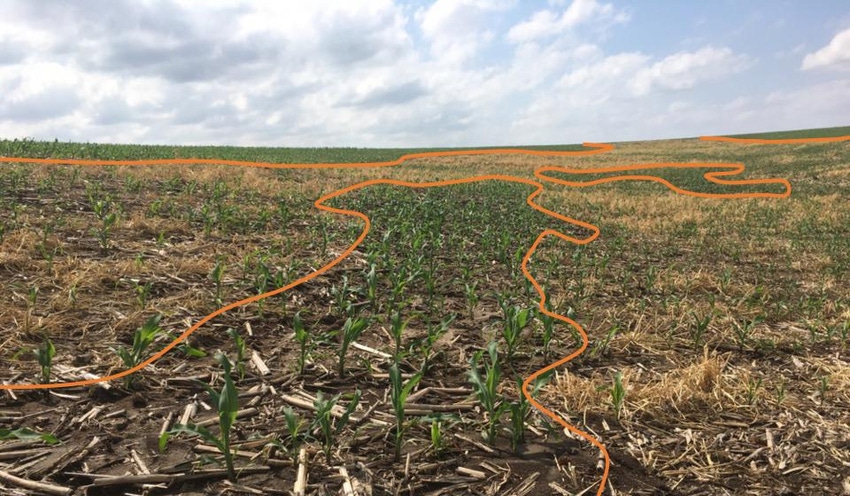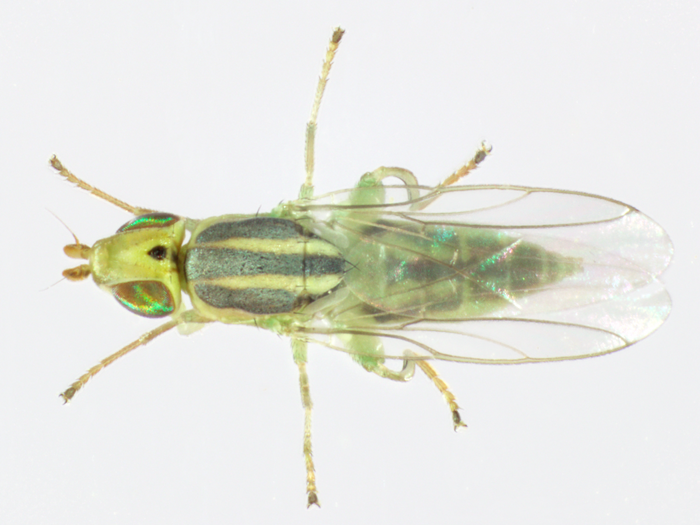March 16, 2018

Source: University of Nebraska-Lincoln
Last spring, we reported wheat stem maggot damage in corn fields that were previously planted to a cover crop in eastern and southern Nebraska. (See June 13 CropWatch Article). In most cases, cover crops (wheat or rye) were still green at the time of planting corn. In some cases, cover crops were only planted on part of the field. In these situations, damaged corn plants were confined only to the areas where a cover crop was present (Figure 1). Such observations suggest that larval movement between the cover crop and corn may have been the primary source of infestation. The frequency of damaged corn plants in fields ranged from 1% to 60% with some farmers reporting losses of 30 bu/acre in fields with a high number of infested plants.
As farmers and consultants gear up for spring planting, many are expressing concerns and asking questions about managing wheat stem maggot in their cover crop. The most common question is in regard to tank mixing an insecticide with a herbicide at the time the cover crop is terminated. We do not recommend this practice for two reasons. First, an insecticide application without any knowledge of pest presence will likely kill beneficial insects in the cover crop that may provide a benefit to the subsequent cash crop. We encourage ag professionals to scout cover crops for wheat stem maggot adults (Figure 2) or larvae (Figure 3) prior to termination to assess pest pressure.
Second, tank-mixed insecticides are unlikely to have enough residual to control insect pests when they leave the cover crop. No information is currently available on when wheat stem maggot will leave a cover crop following a herbicide application. If farmers or consultants find high numbers of wheat stem maggots in their cover crop, we would suggest terminating the cover crop at least 14 days prior to planting corn. If such practices are not possible, producers should consider making an insecticide application 11 days after a glyphosate application. Such tactics don’t guarantee effective control but maximize the likelihood based on common stalk borer control tactics.
We will be collecting sweep net samples every few days throughout the spring to determine first emergence of wheat stem maggot adults and peak flight periods. We would encourage ag professionals to sweep their cover crops for these insects.

Originally posted by the University of Nebraska-Lincoln.
You May Also Like




